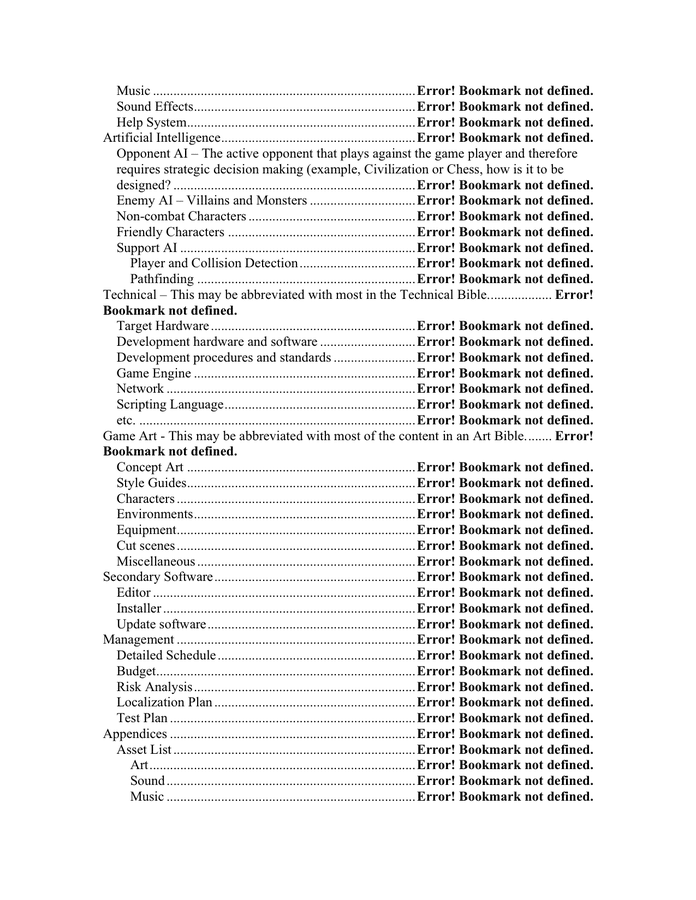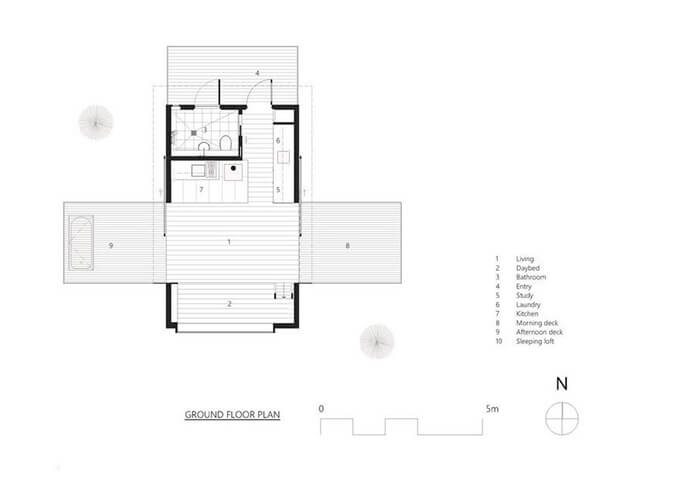Table Of Content

At the same time, overloading the GDD with fluff and filler means that teammates spend valuable development time scrolling through blocks of unnecessary design text. That said, it might make sense to track your bugs elsewhere, but I have personally found success in tracking them within the GDD. The level of enjoyment derived from fighting games is often dependent on how well AI behavior or multiplayer modes are designed. Thus, if you are building a multiplayer game in Unreal (for example), you will want to outline the matchmaking modes and principles of matching in the document.
How to Write a Game Design Document - Game Developer
How to Write a Game Design Document.
Posted: Fri, 10 Sep 2021 11:30:56 GMT [source]
Add visual references & examples
Even if it’s far from being final, it will give readers an idea of the overall art direction you have in mind. Team members can check the GDD whenever they have questions about the design, instead of having to ask the game designer. That helps them make sure the work they’re doing aligns well with the overall concept.
Create a game design document
Think about different parts of your game, animation styles you could use, characters, or even the history of your topic. Give an overview of what your marketing strategy is, who your target audience is, and what kind of promotional efforts you’re planning. Include details about what you need from the game team, and when you’ll need it, to make the marketing efforts a success. Include information about monetization strategy and how that does or does not tie in with the larger marketing efforts. While there is often concept art in many of the previous sections of the GDD, this section is where you can focus on the overall art style and what aesthetic you are trying to create in your game. Describe UI elements such as menus, HUDs, and interactive components in terms of purpose, functionality and layout, and how they fit into the larger art style of the game.
Fill in the Character template
Finally, at the end I'll link to a GDD template I've made, which you can download and use for free in your studio, for your game, or in your classroom. Start your next game project with my GDD template, including sections on Accessibility, Marketing, Production, and more. The answer on how to deal with the idea of GDDs today, lies in a pragmatic wasteless approach. Using it where it makes sense and dismissing the parts of it which have become outdated by our increased understanding of successful game productions. Having pointed out these advantages, let’s talk about issues with GDDs.
When and How to Clearly Communicate a Feature
It’s much better to make a brand-new doc whenever a feature changes radically. As you can see above, many details may change from the initial pitch to the final experience. I suggest you using Google Docs or a wiki (such as Notion) for your documentation makes it much easier to direct team members to more detailed feature docs relevant to their role and make collaboration more efficient. So, if you’ve never built a game before, then doing any GDDs outside of helping you organize the games you’re actually building is a huge waste of time.
As you have already noticed, an elaborate plan is a key to a successful project. The fact that many indie dev studios and beginner teams neglect to create one makes their job much harder. As a result, they start making multiple mistakes and need clarification on their duties and workflow.
Building a game design wiki
A way for you to translate the ideas you have about your game for someone else in the best way possible. However, while a design wiki can be useful for managing a large database of information, separating data into categories and entries can hide the relationships between the different parts of your game. Which can be helpful if you want to build a database of information about items, weapons, pickups and locations in your game. But, if your GDD includes multiple sections and information, organising it in a single file can be tricky and, even with linked section headings, can be difficult to navigate. However, there are more ways than one to manage the design of your game, and you may find that some methods work better for you and your project than others.
A comprehensive understanding of the game from a player's perspective is essential in effective game design. This understanding is typically encapsulated in a section of the game design document, which conveys the essential plot points and the journey the player undertakes through various levels and challenges. This part of the document is crucial as it paints a vivid picture of the player's experience, mapping out the progression from simpler stages to more complex ones. Traditionally, GDDs have been detailed, 100+ page documents, which tried to explain every detail of the game up front.
Add inspiring imagery
These are any aspect of the game that can be tweaked to change the experience. In a racing game this could include the time it takes for nitrous to charge, the number of AI competitors in a race, or the time limit of a lap. Other common examples are the number of bullets in a weapon, character jump height, and the cost of upgrades.
This organization helps both you and the development team easily navigate and reference specific points during the development process. All said and done, good game documentation helps maintain the overall consistency and coherence within the development team, boosting decision-making, problem-solving, and resource allocation in the long run. It is instead a brief description of the main storytelling points. That said, you should mention the characters and describe the relationship between them, the game’s setting, and how the story affects the gameplay. Make it brief yet informative — don’t forget the overall document length.
Paper prototypes can be incredibly useful in solving design problems before spending too much time or money cooking them up in-engine—but they do still take up effort, of course. The following list notes several common reasons teams might find a GDD helpful. Call of Duty is geared towards a wider audience who enjoy high-octane first-person shooters. Knowing your audience whittles down a lot of grey areas and defines your project better. This is where you fully flesh out our protagonists, antagonists, ancillary characters, and more.
Some games have no story at all, and some live and die by their narrative elements (like visual novels, most kinds of adventure games, and many kinds of RPG). Here perhaps even more than any other portion of a GDD, your documentation will vary wildly with your project's overall goals and chosen genre. The whole point of the game design document is to keep everyone on the same page. Words aren’t always the best way to do this, so don’t be afraid to supplement your explanations with visual material.
Or, you could add a rough timeline with some milestones that you’re hoping to hit during development. Some people love them, while some developers claim that they don’t use them at all and haven’t for some time now. Drag in images from your computer and drop them onto the image placeholders on your moodboard. Then, use the built-in image library to add inspirational references. The original GTA (Grand Theft Auto) and Diablo GDDs give a succinct high level overview of the games.
They are responsible for synthesizing, organizing, and filtering ideas to create a cohesive vision that aligns with the project’s overall vision. You have a great new game idea and you are itching to start building it right away. It's a feeling painfully familiar to most game developers, whether they are beginners preparing to create their first game, or seasoned professionals with a proven track record in the industry. Start by thinking about the biggest concept in your game world—the environment. These details can help your team design suitable level backgrounds, clothes for your characters, and even the style of buildings in each level.
Hopefully, this guide has helped you become more organized and create an engaging game design document. If you're just starting a new game, use the Game Design Document template below to get set up in minutes. It requires lots of different tasks, like designing characters, building game levels, programming the game’s mechanics, and composing music. The more complex your game is, the higher the chances that your project and timelines can “go off the rails” if you haven’t planned well enough. For smaller games (think game jam entries or solo projects), a GDD might be less necessary or could just be a few simple pages. If you’re the only person on your project, you might have a clear enough vision in your head, even without extensive documentation to guide the development process.
Whether you're an indie game designer or a team of 20, this guide will help you create an inspiring, modern Game Design Document your team will love and actually use. For this frequently changing nature of a game design document, it is also often referred to as a living document. It may start with only a basic outline and become a detailed framework for each phase of the complete game development process. If there’s one thing all game designers should know how to do, it’s transferring their ideas to their development team. Your game design document will help you do that in an effective, organized way.

No comments:
Post a Comment